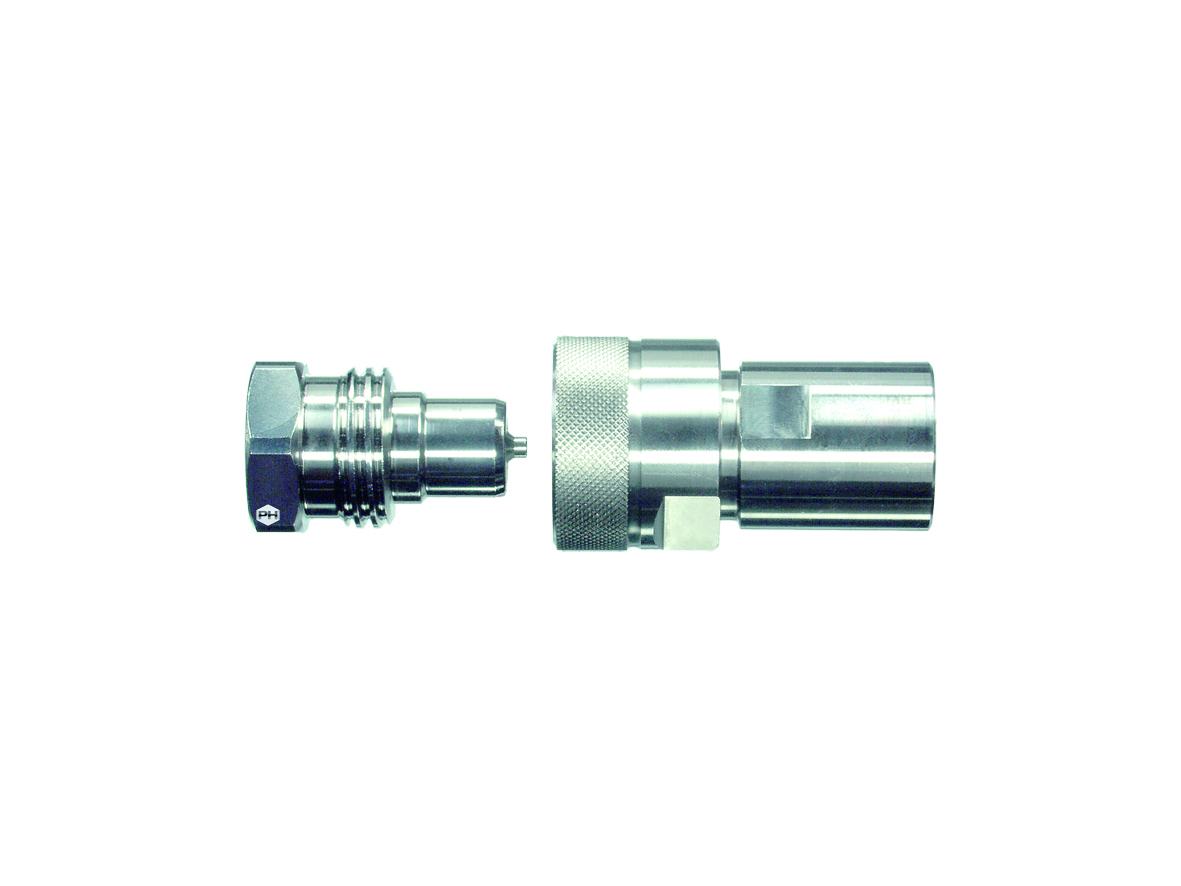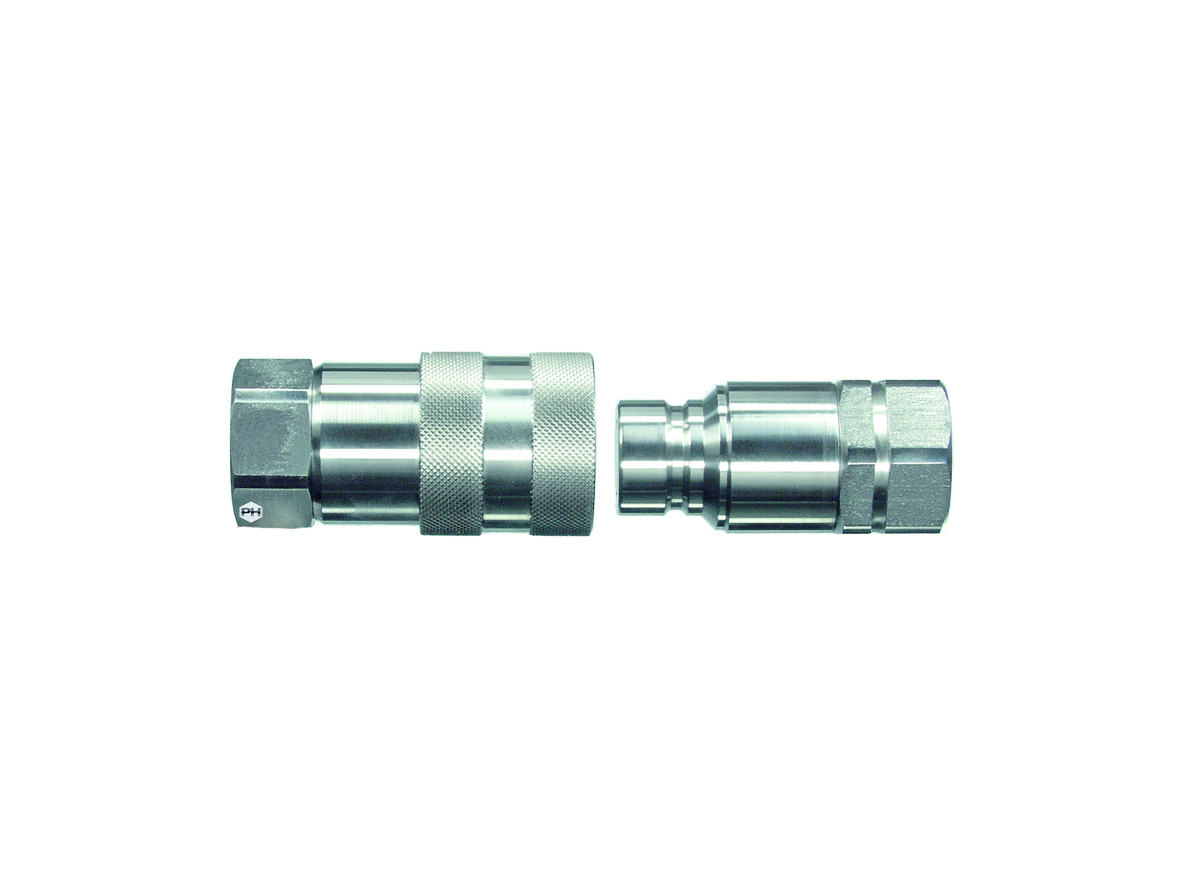Quick-Release Couplings
Quick-release couplings are essential hydraulic fittings designed for fast and easy connection and disconnection of hydraulic lines without the need for tools. These couplings, made from stainless steel (AISI 316), are used across various industries, including construction, agriculture, manufacturing, and fluid transfer, enabling efficient operation and maintenance of hydraulic systems. Available in a range of sizes, they can handle diverse pressure and temperature requirements.
Key Features
- Material: Stainless steel (AISI 316).
- Design: Double shut-off valves in both sides.
- Sealing Mechanism: Viton seals and PTFE backing rings.
- Applications: Hydraulic fluids, mineral oils, glycol-based media, air, and water with corrosion protection.
Advantages
Good resistance to pressure impulses: Designed to withstand dynamic pressure fluctuations in hydraulic systems.
Good flow characteristics: Engineered to minimise flow restriction, ensuring efficient fluid transfer.
Heat and corrosion resistance: Stainless steel construction provides durability in demanding environments.
Suitable for high-pressure applications: Capable of handling significant working pressures, as indicated in the product specifications.
FAQ's
Quick-release couplings are commonly used in hydraulic systems within construction equipment, agricultural machinery, manufacturing processes, and fluid transfer systems.
To choose the right coupling profile, it is important to consider the specific application requirements, including pressure, temperature, and fluid compatibility. For more information on the correct coupling profile for your application contact one of our experts here.
Yes, couplings that adhere to the ISO standard “B series” are completely interchangeable.
Not entirely, but when disconnected, quick-release couplings are designed to keep medium leakage to a minimum.
While quick couplings are designed to minimise flow restriction, in reality, they will introduce some level of flow restriction compared to a straight, uninterrupted pipe. The degree of restriction varies depending on the coupling’s size and design.
Download Catalogue
We’ll email you a PDF version of our catalogue featuring 556 pages of updated engineering reference data. If you want a physical copy, click here


